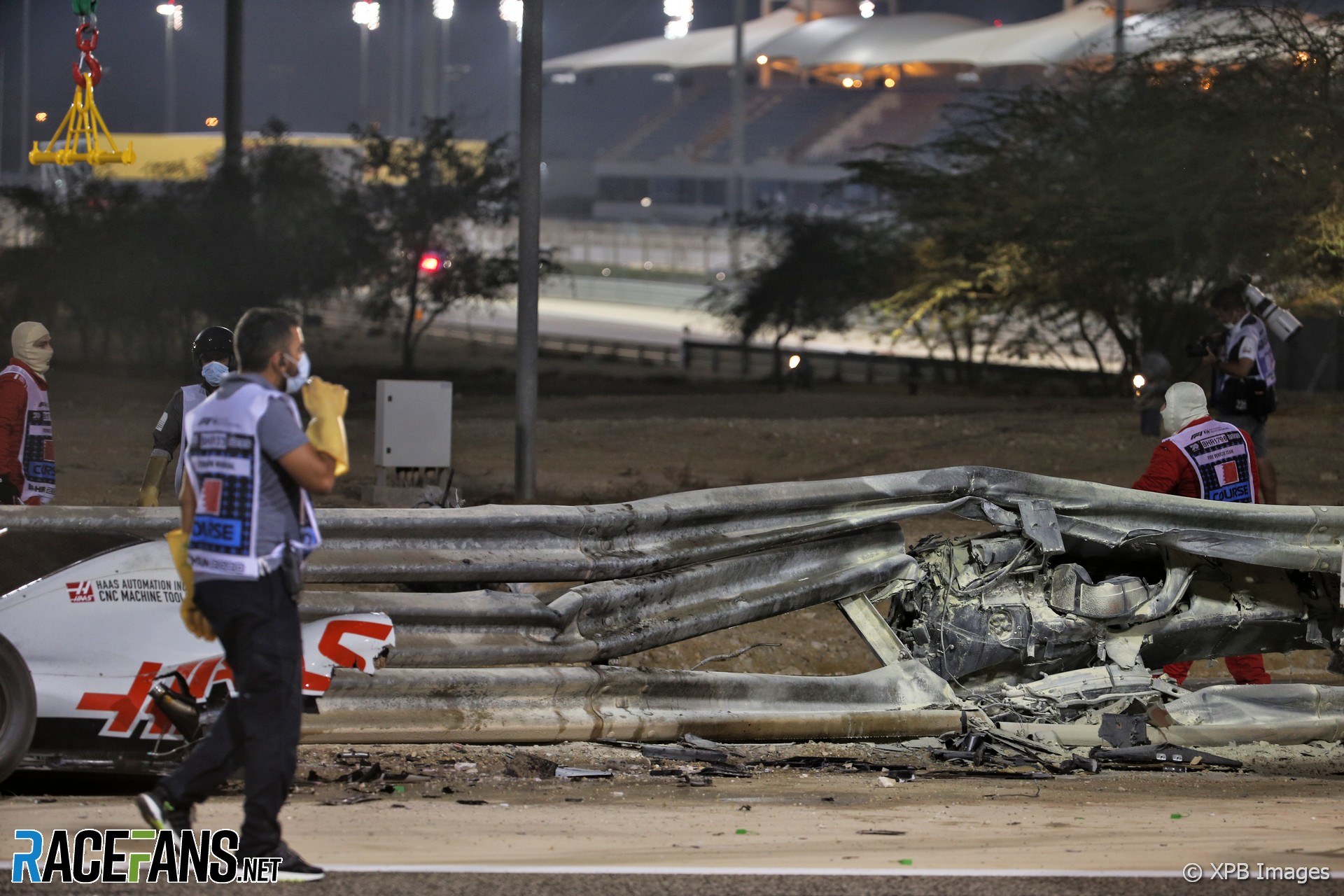Edax wrote: ↑01 Dec 2020, 00:32
Sure there would be better solutions like the Indy safer wall, but I am afraid that would not be economical to operate on a track like this.
The only thing I did not like was that the monocoque wedged itself between the rails. But it seems that there was no vertical fixation between the rails. That should be solvable with a couple of bolts.
Cheap tyres and a conveyor belt facing would have done a reasonable job of absorbing impact energy and preventing penetration of the armco. But to think that a country such as Bahrain couldn't afford to throw some Tecpro barrier up in front of that section of armco seems a bit unlikely.
There was vertical posts supporting the horizontal barrier sections. Indeed, it's possible that one of those very vertical supports is what caused the failure of the chassis in the way that it did.
Armco isn't designed to stop a pointy shaped vehicle - it's intended to stop blunt objects that engage the horizontal "beams". The beams then dislocate from the vertical supports, the beams bend and stretch, sliding junctions between beams allow for extension of the beams. This all absorbs energy. It also expects the vehicle to be moving along the barrier when the impact occurs. Unfortunately, Grosjean's nose structure and then the front of the survival tub punched through a horizontal beams just before a vertical post (you can see the post in the image below). The tub stopped and the engine/gearbox mass pivoted around the vertical post and snapped off the rear of the car. It appears to be an unfortunate "choice" of impact locations. It's very telling that the rear of the car is very close to the tub after both came to rest. Almost all of the energy was absorbed by the barrier and the car being torn in half. There was little energy left to carry the rear of the car along after the impact.

If you are more fortunate than others, build a larger table not a taller fence.



